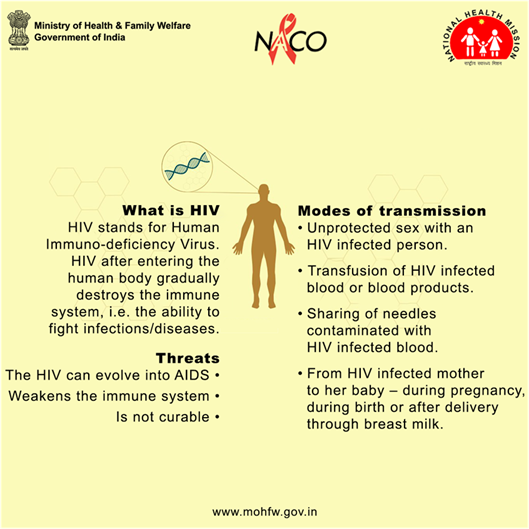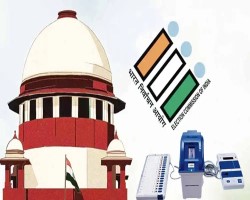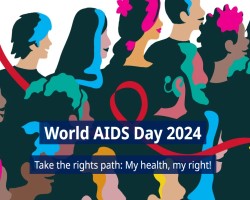SSC Current Affairs
TABLE OF CONTENTS |
| Polity and Governance |
|---|
|
|
|
Why in News?
Recently, The Election Commission(EC) said that a transparent process had been followed in the Maharashtra Assembly election, even as it assured the Congress of a review of all legitimate concerns of the party, and invited it for a meeting on December 3. What is the Election Commission of India? About: The Election Commission of India (ECI) is an autonomous constitutional authority responsible for administering Union and State election processes in India. It was established in accordance with the Constitution on 25th January 1950 (celebrated as National Voters' Day). The secretariat of the commission is in New Delhi. The body administers elections to the Lok Sabha, Rajya Sabha, and State Legislative Assemblies in India, and the offices of the President and Vice President in the country. It is not concerned with the elections to panchayats and municipalities in the states. For this, the Constitution of India provides for a separate State Election Commission. Constitutional Provisions: Part XV (Article 324-329): It deals with elections and establishes a commission for these matters. Article 324 empowers the ECI to supervise, direct, and control the preparation of electoral rolls and the conduct of all elections to Parliament and state legislatures. Article 325 ensures no one is excluded from the electoral rolls based on religion, race, caste, or sex. Article 326 establishes adult suffrage (voting rights for all citizens aged 18 and above) as the basis for elections. Article 327 allows Parliament to make laws regarding elections to Parliament and state legislatures. Article 328 empowers state legislatures to make provisions related to elections within the state. Article 329 prohibits judicial interference in electoral matters. Functions and jurisdiction: Advisory role: ECI advises the President or Governor on matters related to the disqualification of members of Parliament and state legislatures, especially in cases involving corrupt electoral practices. Quasi-Judicial role: ECI can disqualify candidates for failing to submit election expense accounts and resolve disputes regarding the recognition of political parties and the allocation of election symbols. Administrative role: ECI handles the delimitation of electoral constituencies, voter registration, updating of electoral rolls, and scheduling of election dates. It also ensures adherence to the Model Code of Conduct during elections and monitors political campaign expenditures. Structure of ECI: Originally the commission had only one election commissioner but after the Election Commissioner Amendment Act 1989, it was made a multi-member body. In 1989, due to the reduction of the voting age from 21 to 18, two additional Election Commissioners were appointed, making it a three-member body. The Election Commission shall consist of the Chief Election Commissioner (CEC) and such number of other election commissioners, if any, as the President may from time-to-time fix. Presently, it consists of the CEC and two Election Commissioners (ECs). At the state level, the election commission is helped by the Chief Electoral Officer. Appointment & Tenure of Commissioners: The President appoints CEC and Election Commissioners as per the CEC and Other ECs (Appointment, Conditions of Service and Term of Office) Act, 2023. They have a fixed tenure of six years, or up to the age of 65 years, whichever is earlier. The salary and conditions of service of the CEC and ECs will be equivalent to that of the Supreme Court Judge. Removal: According to the Election Commission (Conditions of Service of Election Commissioners and Transaction of Business) Act, 1991, the Chief Election Commissioner and the Election Commissioners can resign at any time by writing to the President. The Chief Election Commissioner can be removed in the same manner and on the same grounds as a judge of the Supreme Court. In other words, he/she can be removed by the President on the basis of a resolution passed to that effect by both Houses of Parliament with a Special Majority, either on the grounds of proved misbehavior or incapacity. Salary and Allowances of the Members of the ECI: According to the Election Commission (Conditions of Service of Election Commissioners and Transaction of Business) Act, 1991, the Chief Election Commissioner (CEC) and two Election Commissioners (ECs) receive equal salaries, allowances, and other prerequisites that are similar to those of the judge of the Supreme Court. Current Salary of the CEC of India is ₹250,000 (US$3,000) per month. Assisting Machinery of ECI: The Election Commission of India (ECI) relies on a well-structured machinery comprising various roles and responsibilities to support the electoral process: Deputy Election Commissioners (DEC) These Commissioners are drawn from civil services and appointed by the ECI with a tenure system. They are assisted by the Secretaries, Joint Secretaries, Deputy Secretaries, and Under Secretaries. Chief Electoral Officer (CEO) These officers are appointed at the State level, by the Chief Election Commissioner in consultation with the State Government. District Returning Officer (DRO) These officers are appointed at the district level. The Collector acts as the DRO for every constituency in the district. Returning Officer (RO) These officers are appointed by the DRO for every constituency. Presiding Officer (PO) These officers are appointed by the DRO for every polling booth. Limitations: The Constitution has not prescribed the qualifications (legal, educational, administrative or judicial) of the members of the Election Commission. The Constitution has not specified the term of the members of the Election Commission. The Constitution has not debarred the retiring election commissioners from any further appointment by the government. Supreme Court’s Directions to Promote Independence of ECI: In Anoop Baranwal vs Union of India Case (2023), the Supreme Court gave the following directions to ensure the independence and neutrality of the Election Commission: Appointment of the Chief Election Commissioner (CEC) and the other Election Commissioners (ECs) shall be made on the recommendations of a three member committee consisting of the following: The Prime Minister, The Leader of the Opposition in the Lok Sabha and The Chief Justice of India. The grounds for removal of the other Election Commissioners should be the same as that of the Chief Election Commissioner i.e., on the like grounds as a Judge of the Supreme Court subject to the recommendation of the Chief Election Commissioner. |
|
|
|
Quick Revision:
Election Commission of India:Part XV (Article 324-329): It deals with elections and establishes a commission for these matters. Formed: 25 January 1950 (26 January Celebrated as National Voters' Day) Headquarters: Nirvachan Sadan, Ashoka Road, New Delhi Constitutional Body executives: Chief Election Commissioner of India: Rajiv Kumar (25th Chief Election Commissioner of India, succeeding Sushil Chandra) Election Commissioners of India: Gyanesh Kumar, Sukhbir Singh Sandhu. Nominator: Union Council of Ministers Appointer: President of India Term length: 6 years or up to 65 years of age (whichever is prior) Salary: ₹250,000 (US$3,000) per month Longest Serving CEC: Kalyan Sundaram Shortest Serving CEC: V. S. Ramadevi |
|
|
|
Frequently Asked Questions (FAQs):
Q1. Which elections are managed by the Election Commission of India?By Article 324 of the Constitution of India, it is vested with the power of conducting elections to – Parliament, State Legislatures, Office of President and Vice-President of India. Q2. When was the Election Commission of India (ECI) Established? The Election Commission of India (ECI) was established on 25th January 1950. This day (25th January) is celebrated annually as National Voters’ Day. Q3. Where is the Secretariat of ECI? The Secretariat of the Election Commission of India (ECI) is in New Delhi. Q4. What is Article 324? Article 324 of the Indian Constitution deals with the functions and powers of the Election Commission of India, which is responsible for conducting elections to the Parliament and State Legislatures. Q5. Who appoints the Members of the Election Commission? The President of India appoints the members of the Election Commission |
| Important Days |
|
|
|
World AIDS Day, observed annually on December 1 since 1988, serves as a global platform to unite people in raising awareness about HIV (Human Immunodeficiency Virus) /AIDS (Acquired Immune Deficiency Syndrome) and demonstrating solidarity against the pandemic. It is an opportunity for governments, organizations, and communities to reflect on the progress made in prevention, treatment, and care while highlighting the ongoing challenges. This day, recognized as one of the most significant international health observances, not only spreads awareness but also commemorates those who have lost their lives to AIDS and celebrates milestones such as expanded access to healthcare services. By fostering understanding about HIV as a critical public health issue, World AIDS Day underscores the integral connection between combating AIDS and achieving Universal Health Coverage and the Right to Health.
2024 Theme: “Take the rights path: My health, my right!” The theme for World AIDS Day 2024, “Take the rights path: My health, my right!” emphasizes the importance of healthcare access and the empowerment of individuals in managing their health. It underscores the need to address systemic inequalities that prevent vulnerable populations from receiving essential HIV prevention and treatment services. This year’s theme highlights the role of human rights in ensuring that everyone, regardless of their background or circumstance, can exercise their right to health. By focusing on this rights-based approach, the 2024 campaign seeks to foster inclusivity, reduce stigma, and encourage global cooperation to eradicate AIDS as a public health threat.  The Current State of HIV/AIDS: A Global and National Perspective: As per the Global AIDS Update 2023 released by The Joint United Nations Programme on HIV/AIDS (UNAIDS), significant strides have been made globally in combating HIV/AIDS. New HIV infections have declined in countries like India, where a robust legal framework and increased financial investments have facilitated progress toward the goal of ending AIDS as a public health threat by 2030. India, in particular, has been acknowledged for strengthening laws to protect the rights of vulnerable populations. On the national front, the India HIV Estimations 2023 report highlights that over 2.5 million people are living with HIV in India. Despite this, the country has made notable progress, with adult HIV prevalence recorded at 0.2% and annual new HIV infections estimated at 66,400, a 44% reduction since 2010. India has outperformed the global reduction rate of 39%, demonstrating the success of sustained interventions. The availability of free high-quality lifelong treatment for over 16.06 lakh people living with HIV (PLHIV) through 725 ART (Antiretroviral Therapy) centers (as on June 2023) and 12.30 lakh viral load tests conducted between 2022–2023 reflect India’s commitment to ensuring care for affected populations. India’s Response to the HIV/AIDS Epidemic: A Comprehensive Approach India’s battle against the HIV/AIDS epidemic began in 1985 with sero-surveillance to detect the virus in various population groups and geographic locations. The initial phase (1985-1991) focused on identifying HIV cases, ensuring blood safety before transfusions, and generating targeted awareness. The response gained momentum with the launch of the National AIDS and STD Control Programme (NACP) in 1992. This marked the beginning of a systematic and comprehensive approach to tackling HIV/AIDS in the country. Over 35 years, NACP has become one of the largest HIV/AIDS control programs in the world. Evolution of the NACP Phases The first phase of NACP (1992-1999) prioritized creating awareness and ensuring blood safety. With the launch of the second phase (1999-2007), direct interventions were introduced across prevention, detection, and treatment. States were also equipped with the capacity for effective program management. The third phase (2007-2012) saw a major scale-up of activities, with decentralized program management reaching district levels. The fourth phase (2012-2017) consolidated earlier efforts with increased government funding, ensuring the program's sustainability. The extended NACP Phase-IV (2017-2021) brought several landmark initiatives, including the passage of the HIV and AIDS (Prevention and Control) Act, 2017, which guarantees equal rights for HIV-positive individuals and prohibits discrimination against them. This act, which came into effect in September 2018, strengthened India’s legal framework to safeguard the rights of people living with HIV (PLHIV). During this phase, the government also launched the ‘Test and Treat’ policy in 2017, ensuring that every individual diagnosed with HIV receives free Antiretroviral Therapy (ART) irrespective of their clinical stage. To re-engage PLHIV who had discontinued treatment, the ‘Mission Sampark’ initiative was implemented in 2017. The onset of the COVID-19 pandemic during 2020-2021 posed significant challenges to the program. However, the NACP leveraged information technology to enhance program review, coordination, and capacity-building efforts. Innovations like multi-month drug dispensation and community-based ART refills ensured the continuity of treatment services during the pandemic. NACP Phase-V: Renewed Focus on Ending AIDS Launched as a Central Sector Scheme for 2021-26 with an outlay of Rs. 15,471.94 crore, NACP Phase-V aims to build on past achievements and address persistent challenges. The NACP Phase-V aims to reduce annual new HIV infections and AIDS-related mortalities by 80% by 2025-26 from the baseline value of 2010. Additionally, the NACP Phase-V aims to attain dual elimination of vertical transmission, elimination of HIV/AIDS related stigma while promoting universal access to quality STI/RTI services to at-risk and vulnerable populations. The NACP Phase-V is designed to achieve specific targets by focusing on eight guiding principles, including community-centered approaches, synergy building, technology integration, gender-sensitive responses, and fostering partnerships. Key collaborations are planned with public and private sectors, leveraging existing government schemes for cost-effective service delivery. Key Objectives of NACP Phase-V HIV/AIDS Prevention and Control: Ensure 95% of high-risk individuals access comprehensive prevention services. Achieve 95-95-95 targets: 95% of HIV-positive individuals know their status, 95% of those diagnosed are on treatment, and 95% of those patients achieve viral suppression. Eliminate vertical transmission by ensuring 95% of pregnant women with HIV have suppressed viral loads. Less than 10% of people living with HIV and key populations experience stigma and discrimination STI (Sexually Transmitted Infection)/ RTI (Reproductive Tract Infection) Prevention and Control: Provide universal access to high-quality services for at-risk populations. Eliminate vertical transmission of syphilis Conclusion World AIDS Day 2024 serves as a reminder of the work that remains to be done to eliminate HIV/AIDS. Through the NACP Phase-V and its rights-based approach, India has made significant progress in prevention, treatment, and care. However, challenges like systemic inequalities and social stigma require continued focus. The theme “Take the Rights Path: My Health, My Right!” encapsulates the collective mission to foster inclusivity, uphold human rights, and ensure equitable healthcare access. As the world moves closer to achieving the goal of ending AIDS by 2030, India’s efforts exemplify the power of collaborative action, innovative strategies, and an unwavering commitment to health equity. By addressing the structural challenges and scaling up successful interventions, India is poised to lead the global fight against HIV/AIDS, ensuring a healthier, stigma-free future for all. |
| Practice Questions |
|
|
|
Q1. Who has been elected as the 11th President of the Asian Development Bank?
Ans: Masato Kanda Q2. What is the term of the President of the Asian Development Bank? Ans: Five Years Q3.Who represents India at the Board of Governors of the Asian Development Bank? Ans: Indian Finance Minister Nirmala Sitharaman Q4. Where is the headquarters of the Asian Development Bank? Ans: Mandaluyong City, Metro Manila, Philippines Q5. Which country is the largest shareholder of the Asian Development Bank? Ans: Japan and the United States of America 16.3 % each. Q6. Ngada Festival, which was seen in the news, is celebrated by which tribes? Ans: Rengma [The Rengma Naga tribe celebrated the Ngada festival-cum-Mini Hornbill Festival at the Tseminyu RSA ground in Nagaland.] Q7. Girnar Wildlife Sanctuary is located in which state? Ans: Gujarat Q8. Notre-Dame Cathedral, which was seen in the news, is located in which country? Ans: France [French President praised over 1,000 craftspeople who rebuilt Notre-Dame Cathedral after a devastating fire in 2019. Notre-Dame is a famous Gothic cathedral in located in Paris, France. It is known for its size, age, and architectural features.] Q9. Atmanirbhar Clean Plant Programme (CPP) is primarily related to which sector? Ans: Horticulture [India and Asian Development Bank (ADB) signed a $98 million loan to boost access to disease-free planting materials for horticulture farmers under the Atmanirbhar Clean Plant Programme. ] Q10. Which ministry has designated snakebite cases and deaths as a ‘notifiable disease’? Ans: Ministry of Health and Family Welfare Q11. What kind of disease is Handigodu, that was recently seen in news? Ans: Bone and Joint disease Q12. High Energy Stereoscopic System (HESS) observatory, which was seen in the news, is located in which country? Ans: Namibia [Scientists at the High Energy Stereoscopic System (HESS) observatory in Namibia detected cosmic rays with record energy levels of 40 teraelectronvolts. HESS is an array of Cherenkov Telescopes in Namibia’s Khomas Highlands, operational since 2003.] Q13. World AIDS Day, designated on 1 December every year since 1988. What is the theme of World AIDS Day 2024? Ans: Take the rights path: My health, my right! Q14. Who won Syed Modi International Badminton Championships 2024 Women's Singles title? Ans: P V Sindhu Q15. Barnawapara Wildlife Sanctuary is located in which state? Ans: Chattisgarh Q16. What is the term length of Chief election commissioner? Ans: 6 years or up to 65 years of age (whichever is prior) Q17. How many countries are members of BRICS? Ans: 9 (Brazil, China, Egypt, Ethiopia, India, Iran, Russian Federation, South Africa and UAE) Q18. Recently, Intergovernmental Negotiating Committee (INC-5) of the United Nations held in? Ans: Busan, South Korea |
Current-Affairs Video : 1-Dec-24 |
|
|
Current-Affairs Video : 1-Dec-24 |
|
|
|
<< 30-Nov-24
|
|
|


